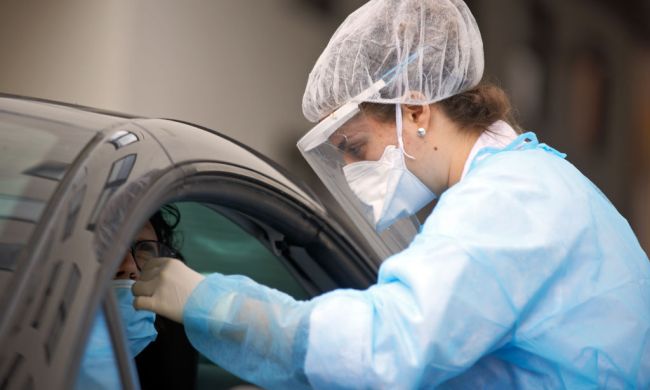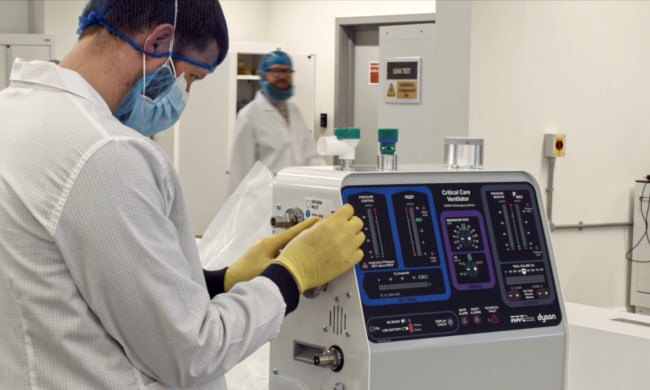The students started trickling into the classroom starting around 8:40 a.m., some blinking in the daylight and a few yawning. The professor, Kathy Pham of Harvard Kennedy School, was bright-eyed and alert, amusing students before she began her lecture by changing the background around her from her office, to underwater, to a jungle, to the Golden Gate Bridge.
It was the first mandated remote Harvard class session of this semester, two days after the university declared it was clearing out and forcing all classes on to the internet until further notice in response to the novel coronavirus outbreak. Pham’s students were signing on to the popular teleconferencing platform Zoom — some with video and some with just their phones — to attend their last class before spring break. Around 70 other U.S. institutions have also moved purely online for the rest of the semester due to the coronavirus, officially known as COVID-19.

For Pham, this was actually the second class she had run remotely; last week, she had been feeling unwell, so as a precaution, she decided to run class via video, she told Digital Trends. This week’s class went smoothly, for the most part. Pham said it was actually her first class this semester with perfect attendance. Because of the unusual circumstances, Pham also told her students she was granting an extension on their final projects, and asked them to please reach out to her if they needed any additional accommodations.
BREAKING: Harvard classes will move online starting March 23 due to a growing global coronavirus outbreak, University President Lawrence S. Bacow announced in an email Tuesday morning. The University has asked students not to return from spring break. https://t.co/rKkapq50nt
— The Harvard Crimson (@thecrimson) March 10, 2020
This question of accommodations for students who might have little or no access to broadband, or a quiet, safe space to attend a class remotely, hasn’t been answered. There’s also the simple fact that sometimes students live together, and might all need to use the Wi-Fi for a class at the same time — something that could strain weaker connections.
Harvard did not respond to a request for comment. Pham, at least, was aware of potential issues.
One of her students on the call, she pointed out, lives in a double room with a roommate, and his roommate was sleeping behind him while class was happening. “Poor guy, he can’t activate his audio or participate in class,” she said. “Harvard has all these suggestions for how to do this best, like be at home, be in a quiet place, turn on your video — and some people can’t do that. Sometimes your family members will be part of the background!”
Bigger than Harvard

Harvard is a university with a $40.9 billion endowment. It has the resources to purchase assets like the Zoom educational license — which allows up to 300 people in one video conference room for an unlimited number of minutes — rather than having to rely on the free version, which only allows 100 people to chat for 40 minutes. The university also set up a website to help guide professors through the best practices of teaching remotely, and Harvard Kennedy School specifically has a team of people who just work on ed tech issues and empower professors like Pham to shift their classes online with little effort.
“They say that when Harvard does something, people watch, but Harvard has a lot of resources,” Pham told Digital Trends. “There are so many times when I’m like, Harvard is so privileged.”
It’s hard to say the same of a school like William Patterson University in Wayne, New Jersey, which has an endowment of $20.3 million — or 0.05% that of Harvard’s. William Patterson also announced it was moving all courses exclusively online as of March 25, until at least mid-April. The school has been less clear about providing resources for instructors.
“I know that the administration has some task force set up in terms of logistics,” said Dr. Wendy Christensen, sociology professor at William Patterson. “But I think, you know, faculty are really creating some of those support structures on our own. I sent my faculty members a long Twitter thread where somebody was getting out all kinds of tips about teaching online … We’ve been chatting among ourselves about how are we supposed to do this. How do we help our adjuncts? How do we help people who have never taught online before to make this transition?”
Faculty at public universities, and even some smaller, private institutions, are having to come up with ad hoc solutions. “I know of no training [on education tech learning systems] that trains people in online accessibility,” said Dr. Cate Denial, professor of American history at Knox College in Galesburg, Illinois, a private institution with an endowment of $140 million (0.3% that of Harvard’s). “What I know I’ve learned from people beyond my campus, through Twitter and professional development organizations.”
An avalanche of ed tech apps
Having class online is also not as easy as simply switching on your laptop camera (assuming you have a camera on your laptop, and a laptop that can handle video). There are many different learning management systems (LMS) available, like Blackboard or Canvas, but while some LMS are school-mandated, others are simply professors’ preference.
“Knox doesn’t have a mandated LMS,” Denial told Digital Trends. “ITS supports Moodle, which is clunky at best. Many of us use Classroom, but we’re self-supporting on that platform. I know of one colleague who uses Canvas. We’re all over the place.”
Professors will now have to teach students their particular LMS of choice, and make sure they all have access to software like Zoom that can really help. While some lectures that have small breakout sessions, like Pham’s, can translate well to an online environment, not every teaching format works that way. It’s also not clear whether universities will pay for premium subscriptions to conferencing services like Zoom, leaving some professors with a subpar experience, low-quality video, and limits on the number of participants.
“What I’m struggling with is how to translate a 26-person discussion section to an online format, given that we don’t have an institutional membership to Zoom. etc.,” Denial told Digital Trends. “And there are classes I plain don’t know what to do with, like our Intergroup Dialogue class, which depends on being face-to-face and reading body language, etc. My colleagues in lab classes, dance, studio art, etc., have it really tough.”
While Pham and her students at Harvard have the ability to approximate a real class as closely as possible because Harvard’s license with Zoom allows it, not all of academia will have the same opportunity despite dealing with the same coronavirus pandemic.



